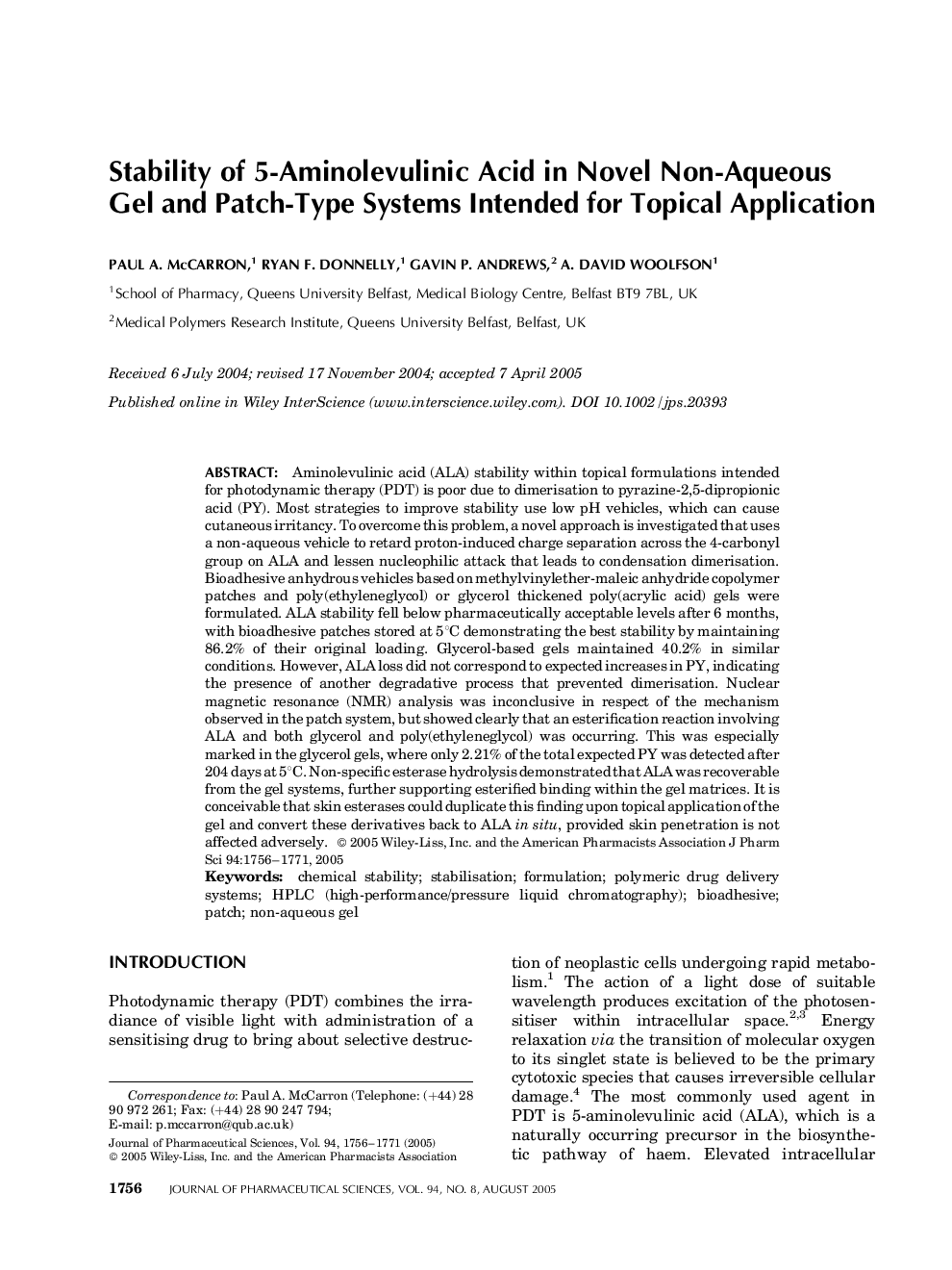| کد مقاله | کد نشریه | سال انتشار | مقاله انگلیسی | نسخه تمام متن |
|---|---|---|---|---|
| 8994811 | 1114461 | 2005 | 16 صفحه PDF | دانلود رایگان |
عنوان انگلیسی مقاله ISI
Stability of 5-aminolevulinic acid in novel non-aqueous gel and patch-type systems intended for topical application
دانلود مقاله + سفارش ترجمه
دانلود مقاله ISI انگلیسی
رایگان برای ایرانیان
کلمات کلیدی
موضوعات مرتبط
علوم پزشکی و سلامت
داروسازی، سم شناسی و علوم دارویی
اکتشاف دارویی
پیش نمایش صفحه اول مقاله

چکیده انگلیسی
Aminolevulinic acid (ALA) stability within topical formulations intended for photodynamic therapy (PDT) is poor due to dimerisation to pyrazine-2,5-dipropionic acid (PY). Most strategies to improve stability use low pH vehicles, which can cause cutaneous irritancy. To overcome this problem, a novel approach is investigated that uses a non-aqueous vehicle to retard proton-induced charge separation across the 4-carbonyl group on ALA and lessen nucleophilic attack that leads to condensation dimerisation. Bioadhesive anhydrous vehicles based on methylvinylether-maleic anhydride copolymer patches and poly(ethyleneglycol) or glycerol thickened poly(acrylic acid) gels were formulated. ALA stability fell below pharmaceutically acceptable levels after 6 months, with bioadhesive patches stored at 5°C demonstrating the best stability by maintaining 86.2% of their original loading. Glycerol-based gels maintained 40.2% in similar conditions. However, ALA loss did not correspond to expected increases in PY, indicating the presence of another degradative process that prevented dimerisation. Nuclear magnetic resonance (NMR) analysis was inconclusive in respect of the mechanism observed in the patch system, but showed clearly that an esterification reaction involving ALA and both glycerol and poly(ethyleneglycol) was occurring. This was especially marked in the glycerol gels, where only 2.21% of the total expected PY was detected after 204 days at 5°C. Non-specific esterase hydrolysis demonstrated that ALA was recoverable from the gel systems, further supporting esterified binding within the gel matrices. It is conceivable that skin esterases could duplicate this finding upon topical application of the gel and convert these derivatives back to ALA in situ, provided skin penetration is not affected adversely.
ناشر
Database: Elsevier - ScienceDirect (ساینس دایرکت)
Journal: Journal of Pharmaceutical Sciences - Volume 94, Issue 8, August 2005, Pages 1756-1771
Journal: Journal of Pharmaceutical Sciences - Volume 94, Issue 8, August 2005, Pages 1756-1771
نویسندگان
Paul A. McCarron, Ryan F. Donnelly, Gavin P. Andrews, A.David Woolfson,